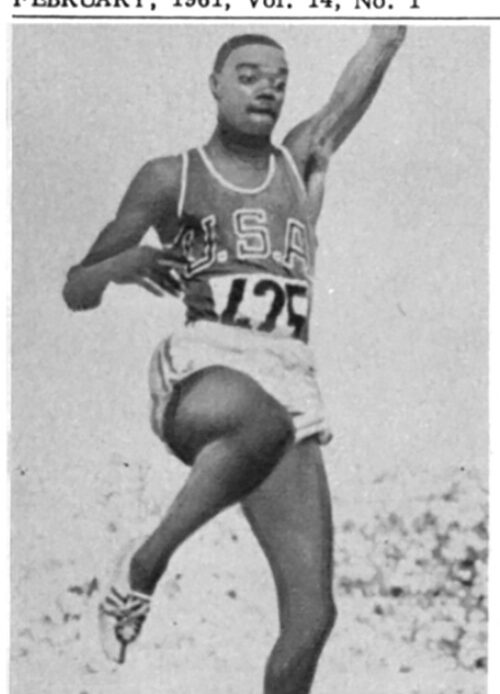Based on research and personal interviews, author Aime Card illuminates the personality of an American icon. Long jump legend Ralph Boston’s incredible life was a story of triumph over adversity off the track as much as on.
RALPH BOSTON, an Olympic medalist in three consecutive Games during the ’60s died Sunday, April 30th at the age of 83. Raised in deeply segregated Laurel, Mississippi, Ralph Boston defied physical gravity, earning his way to college with his outstanding performance in the long jump and hurdles.
Boston became the first man to break the 27-foot barrier (8.23m) in the long jump, earning a medal in three consecutive Olympics, then leveraged his experience to become a beloved sports commentator for CBS and ESPN, and an Assistant Dean of Students at the University of Tennessee in Knoxville.
[Ed: T&FN’s Athlete Of The Year for 1961, Boston World Ranked in the long jump 10 times 1959–68. For 8 consecutive seasons, 1960–67, in which fellow stars Igor Ter-Ovanesyan and Lynn Davies were tough competitors to best, Boston wracked up consecutive No. 1s. In the 110 hurdles he World Ranked twice (No. 5 in ’61, No. 10 in ’63).
He sensationally entered the club of World Record breakers in August, 1960, when he leapt 26-11 (8.21) to add 3 inches to the standard set by the great Jesse Owens a quarter-century earlier. Boston broke the WR five more times in his career, maxing out at 27-4½ (8.35) in ’65.]
Boston’s position as a university administrator was particularly important to him, because he witnessed the school’s integration after his own college degree was earned.
Boston was the youngest of nine children and grew up in Laurel, Mississippi. Everyone in Laurel knew him as Hawkeye. “Before the age of 10,” Boston said, “I looked like six o’clock. Skinny and straight up and down. I had a big head and bulging eyes, so large that I couldn’t fully close them.” His cousin called him Hawkeye because he liked to keep an eye on things, even while he slept.
“Growing up in Laurel was like growing up in any small town in Mississippi in the late 1940s and 1950s,” Boston said. “You didn’t expect much because there wasn’t much around set aside for Blacks.” Boston went to school in a small wood building without heating, using books that were passed on from the white children’s…
CLICK HERE to Read the Full Original Article at Track & Field News…

